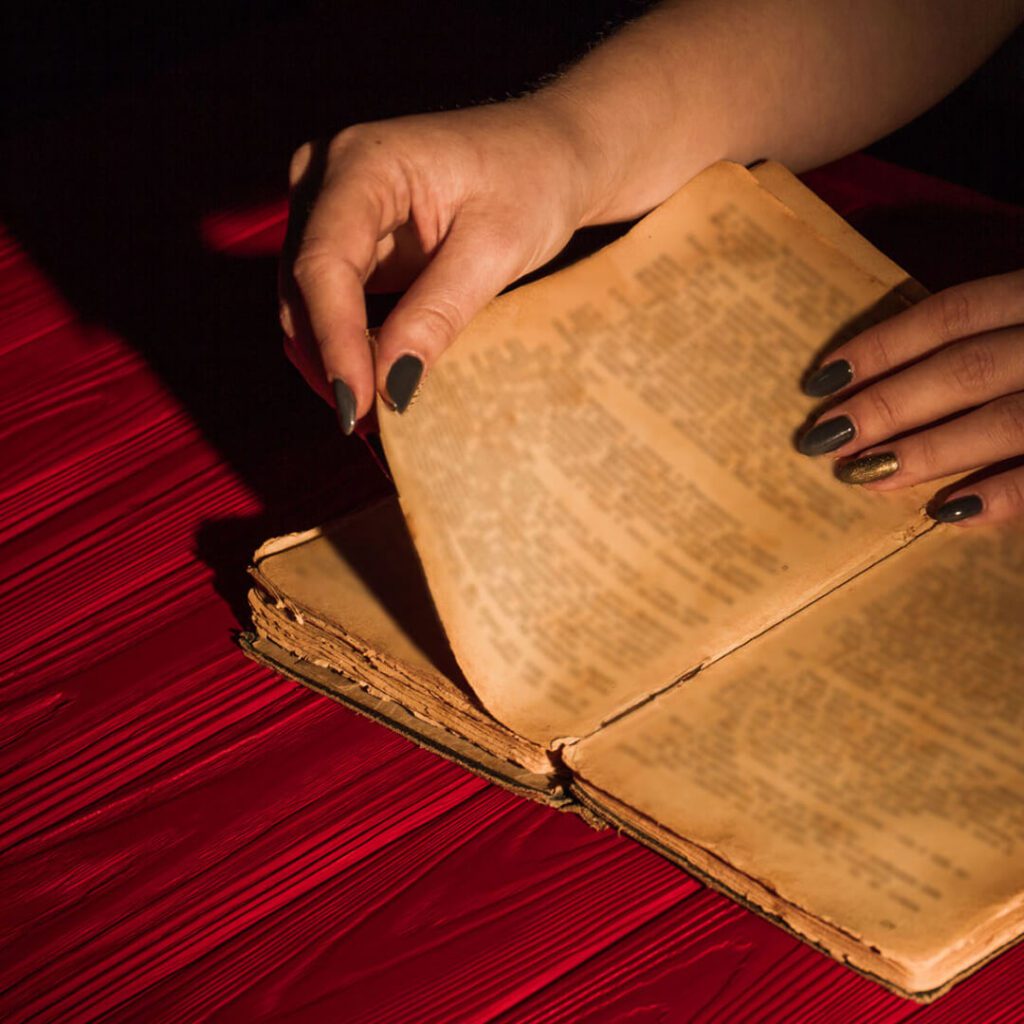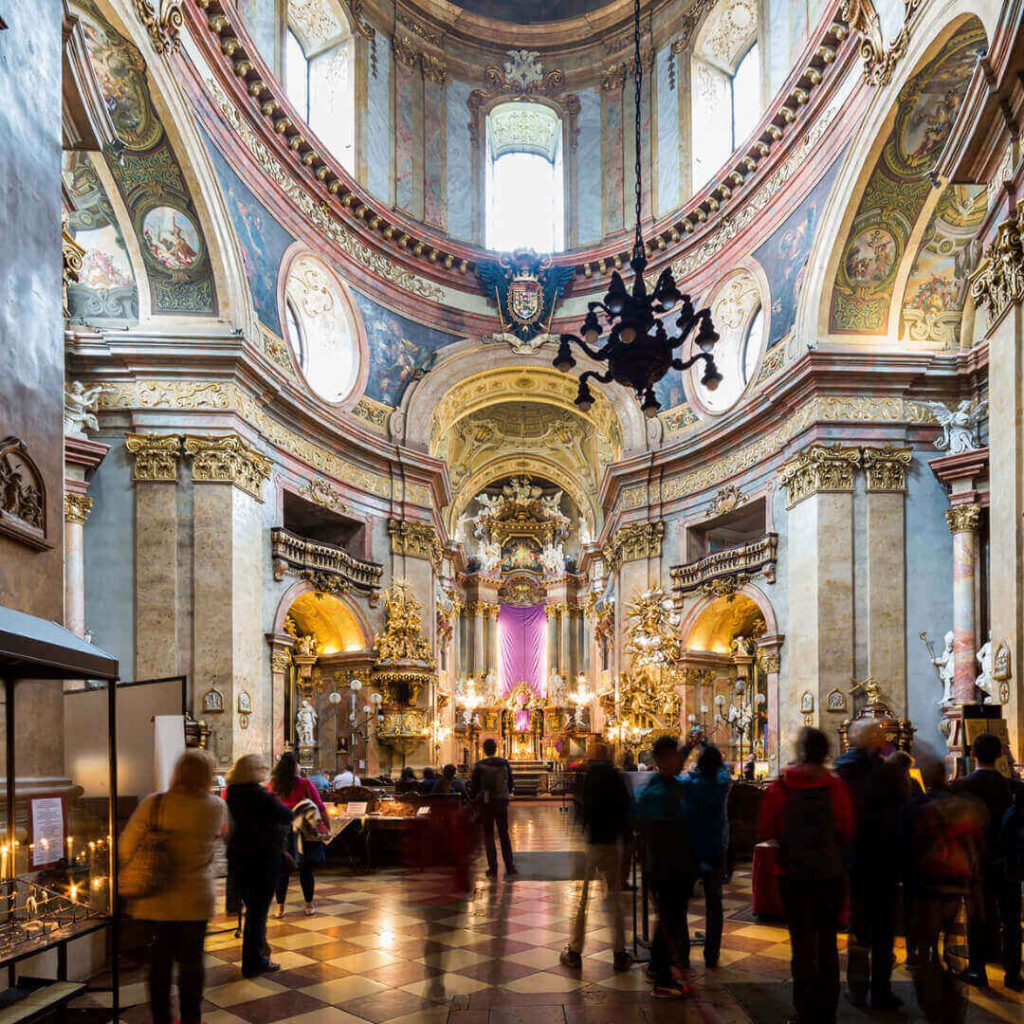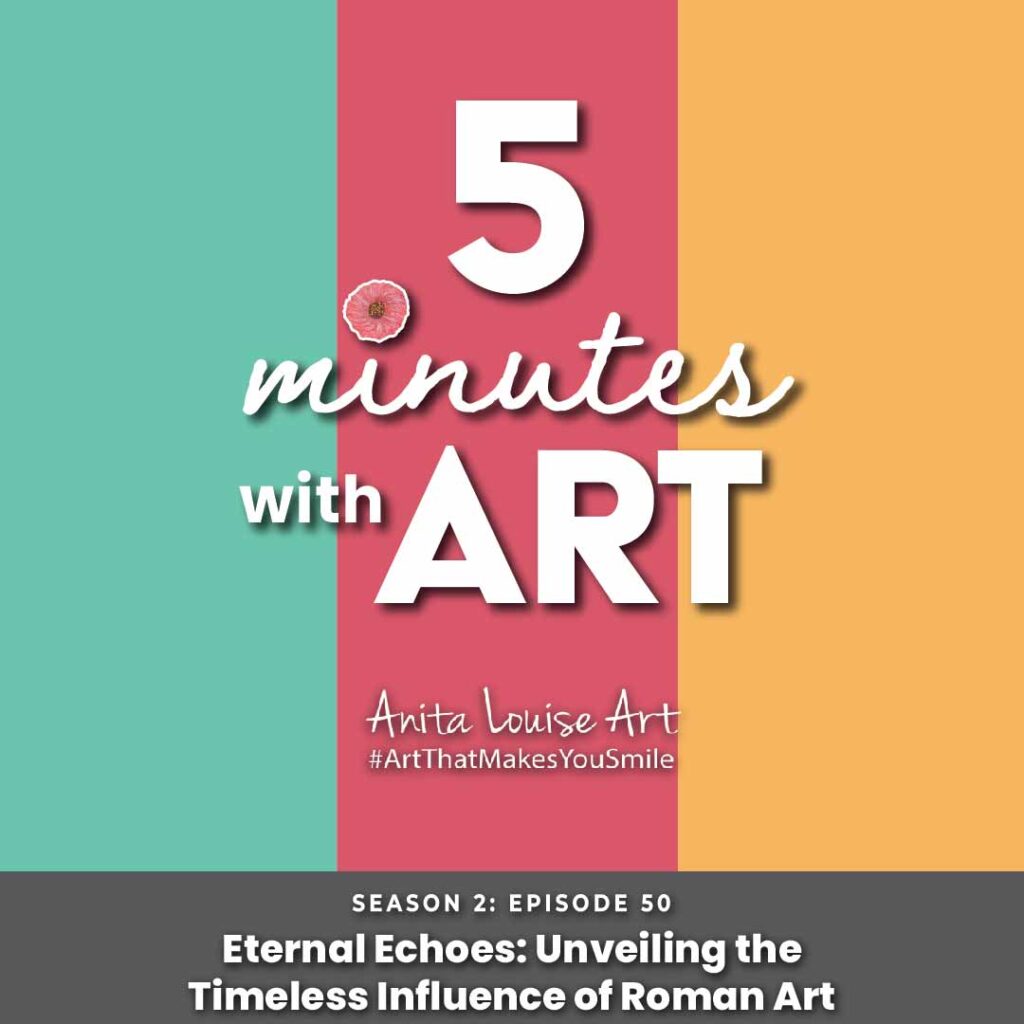Roman art is one of the ancient arts that continues to influence artists today. When many look at art, we may discount Roman art, but Roman art is a significant form of art.
Roman art is renowned for its rich history, impressive architecture, and stunning sculptures that captivate people worldwide. The influence of Roman art and culture can be seen in many aspects of modern life, from the design of public buildings to the portrayal of ancient Roman themes in popular media.
Table of Contents
- About Roman Art And Why It Is Important
- 9 Ways That Roman Art & Life Continues To Influence Us Today
- Legacy of the Ancients: A Glimpse into Roman Art
- Frequently Asked Questions
- Related Questions
Read on in this blog post as we will explore the lasting impact of Roman art and examine how it continues to shape our world today. Whether you’re an art lover, a history buff, or simply curious about the legacy of ancient Rome, we will give you a fascinating glimpse into the enduring power of Roman art.
About Roman Art And Why It Is Important
Roman art is one of the most significant artistic legacies of the ancient world. From stunning sculptures and intricate mosaics to breathtaking architecture, Roman art continues to captivate and inspire us today.
The ancient Romans were renowned for their artistic achievements, which included architecture, sculpture, painting, and decorative arts. Roman art was beautiful and served various functions, from glorifying powerful rulers to celebrating everyday life.
Despite the passage of time, the influence of Roman art can still be seen in many aspects of modern culture.
9 Ways That Roman Art & Life Continues To Influence Us Today
We will explore nine ways Roman art and life have shaped and influenced our world, from its enduring aesthetic appeal to its profound impact on our understanding of history and civilization. The influence of Roman art can be seen in various fields, from art and architecture to fashion and design.
Nine ways that Roman art continues to influence us today.
Architecture And Roman Art
Roman architecture is known for its grandeur and sophistication. Roman architecture inspires architects today; we continue to be inspired by the Colosseum and the Pantheon to aqueducts and triumphal arches.

Many modern buildings take inspiration from the classical Roman style, including government buildings, museums, and even shopping malls. Also, in places like the United States, you can see many government buildings that have been influenced by Roman art and architecture.
Art And Roman Art
Roman art continues to inspire artists today, particularly in sculpture and painting. Many contemporary artists have been influenced by the naturalism and realism of Roman art, as well as the use of color and texture.

These artists will build upon what the Roman artists have done but then give the art a modern twist.
Fashion And Roman Art
Roman fashion was characterized by flowing drapery and intricate details, inspiring fashion designers today. Roman fashion has impacted the industry, from flowing gowns to intricate patterns and embellishments.

Today you can see artists who show some touches and inspiration of Roman art.
Law And Roman World And Art
Roman law had a profound impact on Western legal systems. Many legal concepts and principles that the Romans developed are still in use today, including the idea of being innocent until proven guilty and the notion of natural rights.

In many of our court buildings, you will see architectural influences of Roman art in architecture and interior design.
Engineering And Roman Art And Life
Roman engineering was renowned for its innovation and sophistication. Roman engineers developed technologies such as the aqueduct and the arch, which have impacted engineering and construction.

.
Literature And Roman Art
Roman literature, such as the Aeneid and the Metamorphoses, have profoundly impacted Western literature. Many contemporary works of literature, including novels and poetry, continue to draw inspiration from the themes and motifs of Roman literature.

.
Music And Roman Art

Roman music has been lost to time, but its influence can still be felt today. Many contemporary composers and musicians draw inspiration from the musical traditions of the ancient world, including the use of harmony and melody.
Philosophy And Roman Art

The Greeks heavily influenced Roman philosophy, but it developed its distinct schools of thought. Stoicism, for example, profoundly impacted Western philosophy and ethics, and its influence can still be felt today.
Religion And Roman Art
The Roman Empire was home to diverse religious traditions, including Christianity, which became one of the world’s largest religions. The influence of Roman religious traditions can still be felt today, particularly in the Catholic Church.

The influence of Roman art continues to be felt in various fields, from architecture and art to law and engineering. By understanding the impact of Roman art on our modern world, we can gain a greater appreciation for the richness and diversity of our cultural heritage.
It is essential to study and preserve the legacy of Roman art to ensure that it continues to inspire and influence future generations.
Legacy of the Ancients: A Glimpse into Roman Art
With its vast territories and enduring influence, the Roman Empire left a rich artistic legacy that has shaped the course of Western art. From colossal architectural marvels to intricate sculptures,
Roman art represents the empire’s grandeur, innovation, and intersections with various cultures.
Delve into the artistic tapestry of ancient Rome with these ten illuminating facts:
- Blend of Cultures: Roman art was significantly influenced by earlier Etruscan and Greek art. Many Roman sculptures, especially in the early periods, were copies or adaptations of Greek originals.
- Portraiture: The Romans were pioneers in the realm of portraiture. Their sculptures often depicted detailed and realistic likenesses, emphasizing individual features and even showcasing signs of aging.
- Architectural Marvels: The Romans introduced architectural elements like the arch, vault, and dome, leading to grand structures such as the Colosseum, aqueducts, and the Pantheon.
- Mosaic Art: Roman mosaics, intricate designs created using tiny colored tiles, depicting scenes from daily life, mythology, and nature. These were commonly used to decorate floors and walls of villas and public buildings.
- Frescoes: Roman wall paintings or frescoes, especially those preserved in Pompeii and Herculaneum, provide insights into Roman life, fashion, and interiors. They ranged from detailed scenes to intricate patterns.
- Busts and Statues: While the Greeks focused on idealized youth in their statues, Roman sculptors produced a broader array of statues, including elderly, wise-looking figures, highlighting the value placed on experience and age.
- Metalwork: The Romans excelled in metalwork, crafting intricate jewelry, coins, and valuable objects. They often used gold, silver, and bronze and incorporated precious gemstones in their designs.
- Sarcophagi: Roman sarcophagi, or stone coffins, were elaborately carved and served as a key medium to showcase reliefs depicting mythological stories or the deceased’s achievements.
- Use of Concrete: The Romans were among the first to use concrete on a massive scale, enabling them to construct more significant and more durable structures, some of which stand today.
- Public Art: Art in ancient Rome wasn’t limited to palaces and homes of the elite. Public art, including statues, monuments, and reliefs, was common, often commissioned to commemorate military victories or to honor leaders.
Ancient Roman art is a reflection of its society’s values, beliefs, and expansive reach. By studying these artifacts and structures, we not only appreciate aesthetic achievements but also gain profound insights into the cultural and social fabric of one of history’s most influential empires.
Listen To Our Podcast About Eternal Echoes: Unveiling the Timeless Influence of Roman Art Below or By clicking here.

Anita Louise Art is dedicated to art education, great artists, and inspiring others to find and create their art. We love art that uplifts and inspires. #ArtToMakeYouSmile! #ArtToMakeYouHappy!
If you are interested in seeing any of my art, you can find out more by clicking here. If you are interested in what inspires me and my paintings, you can discover more by clicking here.
We have a free newsletter and would love you to be part of our community; you can subscribe to the newsletter by clicking here. If you have any questions, I would be happy to talk to you. You can reach me, Anita, by clicking here.
Subscribe to our Anita Louise Art YouTube Channel filled with great videos and information by clicking here.
Join us for our podcast “5 Minutes With Art.” Spend just 5 minutes a week with us to discover and learn about great art and artists. You can find out more about our podcast by clicking here.
Frequently Asked Questions
How does Roman art influence modern architecture?
Roman architectural styles, especially the use of the arch, dome, and concrete construction, have greatly influenced modern architecture. Many public buildings, such as courthouses and government buildings, reflect elements of Roman architecture.
How has Roman sculpture influenced modern art?
Roman sculpture, known for its realism and attention to detail, has greatly influenced Western sculpture. Many modern sculptors have studied Roman techniques and aesthetics.
How has Roman painting influenced modern art?
Frescoes and mosaics from Roman times have influenced modern painting techniques and styles, particularly the use of perspective and realism.
How did Roman art influence Renaissance art?
During the Renaissance, artists looked back to Roman art for inspiration, studying its techniques and styles. This led to a revival of interest in classical art and played a significant role in shaping Renaissance art.
How does Roman art influence modern cinema and theater?
Roman themes, stories, and aesthetics have influenced many films and theater productions. For example, the design of sets and costumes in historical and fantasy films often borrows from Roman art.
What elements of Roman art can be seen in modern city planning?
Roman city planning principles, including the use of a grid system and the segregation of public and private spaces, can be seen in many modern cities.
How has Roman coinage influenced modern coins?
The tradition of featuring the faces of leaders and significant historical events on coins originated with the Romans. This practice continues in many countries today.
How does Roman art influence modern mosaics?
The Romans were renowned for their mosaics, and their techniques and styles have influenced modern mosaic artists.
Has Roman art influenced modern fashion?
Yes, many fashion designers have been inspired by Roman clothing and jewelry designs, bringing elements of them into modern fashion.
Related Questions
What Are The Major Periods In Western Art History?
The major Western art history periods are defined as Prehistoric Art, Ancient Art, Medieval Art, the Renaissance, Mannerism, Baroque, Rococo, Neoclassicism, Romanticism, Realism, Art Nouveau, Impressionism, Post – Impressionism, Fauvism, Expressionism, Cubism, Surrealism, Abstract Expressionism, Op Art, Pop Art, Arte Povera, Minimalism, Conceptual Art and Contemporary Art.
By clicking here, you can learn more by reading What Are The Major Periods In Western Art History?.
The Important Role Of Art Museums In The Art World
An art museum will help to collect and preserve works of art. They also interpret the art and help to educate us all about art. Many art museums will have programs that will allow you to even experiment with different types of art. The core role of an art museum is to inspire us about art.
By clicking here, you can learn more by reading The Important Role Of Art Museums In The Art World.
Greek And Rome’s Influence On Renaissance Art
The Renaissance, a period of rebirth, was greatly influenced by the classical ancient arts of Greek and Rome. During this period, many Greek and Roman works of art were also rediscovered; this helped the rediscovery of realism, symmetry, and harmony in the arts. Greek and Roman art also influenced the subject matter of many of the Renaissance artists.
By clicking here, you can learn more by reading about Greek And Rome’s Influence On Renaissance Art.

